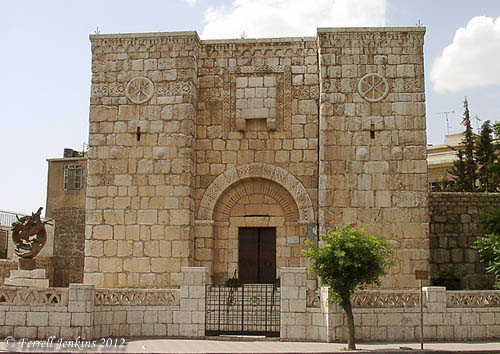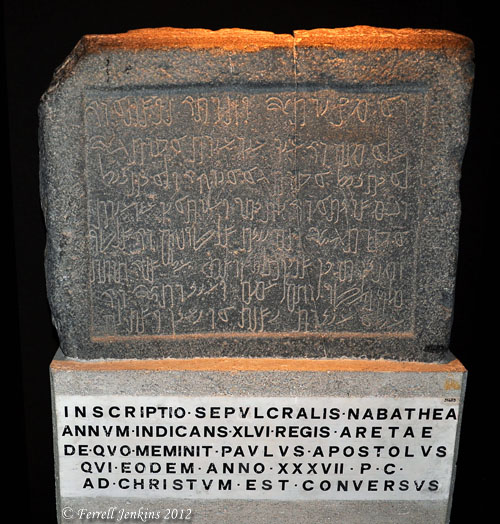'via Blog this'
Luke’s account of the conversion of Saul and his subsequent time in Damascus records the nighttime escape from the city.
When many days had passed, the Jews plotted to kill him, but their plot became known to Saul. They were watching the gates day and night in order to kill him, but his disciples took him by night and let him down through an opening in the wall, lowering him in a basket. (Acts 9:23-25 ESV)
A modern chapel built into the old city wall marks a spot where this might have happened. Tradition calls it St. Paul’s Window.
In 2 Corinthians, Paul provides historical context for this event.
At Damascus, the governor under King Aretas was guarding the city of Damascus in order to seize me, but I was let down in a basket through a window in the wall and escaped his hands. (2 Corinthians 11:32-33 ESV)
Paul says that the governor (literally ethnarch) under Aretas the king was guarding the city. Aretas IV was a Nabatean ruler whose jurisdiction, in some way, extended to Damascus. The king, whose rule extended from 9 B.C. to A.D. 40, was father-in-law to Herod Antipas. This chronological note lets us know that Saul’s conversion was prior to A.D. 40.
Sometimes one gets lucky when visiting certain sites or museums. My last visit to the Vatican Museum in Rome provided a nice surprise. A Nabatean tomb inscription mentioning Aretas was on display in a special exhibit.
A friend in Pisa, Italy, Dr. Arrigo Corazza, has provided me with a quick translation of the Latin sign underneath the inscription:
NABATEAN SEPULCHRAL INSCRIPTION REFERRING TO THE 46th YEAR OF THE KING ARETAS (37 AD), WHO IS QUOTED BY THE APOSTLE PAUL (WHO CONVERTED AROUND THIS TIME).
For those who may have forgotten, the Nabateans were responsible for the beautiful temples and tombs we see when we visit Petra.



No comments:
Post a Comment